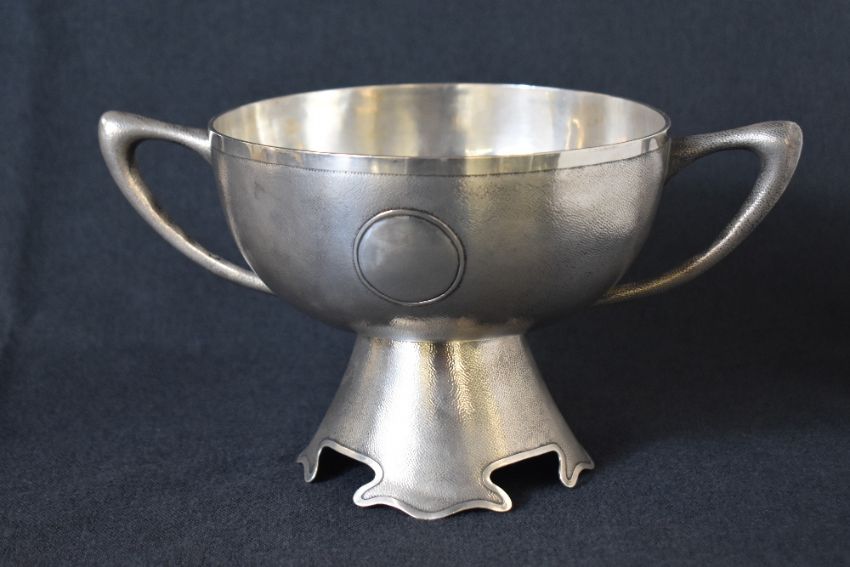Chinese export silver refers to the silverware produced in China for the Western market, primarily Europe, between the 18th and 20th centuries, as export trading increased. As interest in the East increased, more and more people took an interest in having Chinese style décor; however, there was still very much a demand for European forms of items. Therefore, items such as tankards, candlesticks, and tea sets were sent so that the Chinese silversmiths could copy the designs. Soon, the items began having Chinese motifs such as dragons, chrysanthemums, and bamboo, along with Chinese forms.
Unlike Europe and America, China did not have set hallmarks to identify items. Therefore, when creating items for the Western market, the Chinese silversmiths would imitate the hallmarks they saw on Western items. Some well-known makers
were Sun Shing (1790-1885) and Wong Shing (1820-1860), Hoaching c.1825-1870 and WE/WE/WC c.1820-1880. Identifiable with ‘SS’ initials and pseudo marks, a ‘Lombardic H’, and the marks WE/WE/WC were an attempt to copy the marks for William Eley, William Fearn and William Chawner, WE/WF/WC.
When collecting these items, it’s essential to look for signs of repair or damage from mishandling, as well as for thinned areas where monograms and inscriptions have been removed. Popular items are those decorated with dragons and those with intricate filigree work.
View past, present and upcoming silver catalogues.

